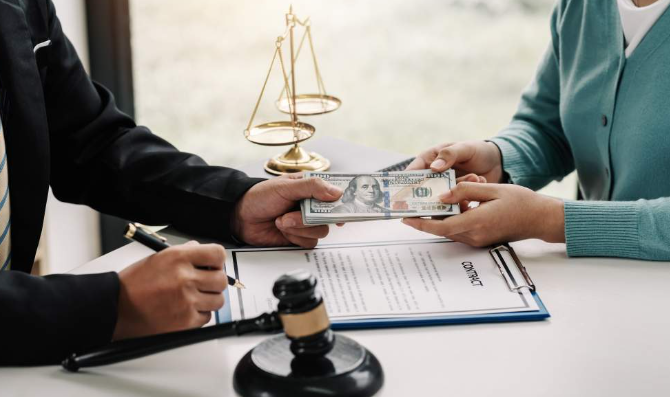
What is a personal injury claim? Accidents and injuries can be very upsetting for you or your loved ones, even if they happen often. If you decide to take legal action to protect your rights after an accident or injury, you might have some questions. In personal injury law, there are some key ideas like tort laws and civil suits. The amount of money that someone who got hurt can get usually depends on how bad the injury is.
BOOK A FREE CONSULTATION
What Is a Personal Injury Lawsuit (PIL)? The Basics
Personal injury cases happen when someone gets hurt in an accident, and someone else might be at fault. In these situations, the person responsible usually has insurance that pays for things like medical bills, ongoing healthcare costs, and the pain and suffering caused by the injury. Your personal injury lawyer will talk with the insurance company and hospital lawyers if your case involves medical mistakes.
To deal with a personal injury case, you’ll have a personal injury attorney who represents you in a court hearing. This court session figures out who’s legally responsible for the injury. This can be settled in two ways: a decision by the court or, more commonly, an agreement between the parties before a lawsuit is officially filed. How long this whole process takes depends on how serious the injury is and how much the person hurt has suffered. It could be a few months or even several years.
Now, let’s talk about the two most likely outcomes in cases where you need medical treatment after a car accident or an injury caused by property damage.
Formal Lawsuit
In a formal lawsuit, it’s not like criminal cases, which are brought by the government. Instead, a formal lawsuit starts when an individual, known as the plaintiff, files a civil claim against another person, called the defendant. The plaintiff says that the defendant acted carelessly or irresponsibly and caused a serious accident or injury. We call this process “filing suit.” This discussion about proving things and showing negligence is quite helpful.
Informal Settlements
Many times, when there’s a disagreement about who’s at fault in an accident or injury, people can work things out without going to court. This is often done through informal settlements. It involves the people involved, their insurance companies, and their lawyers. They negotiate and agree in writing to drop the idea of going to court in exchange for a certain amount of money.
Note: It’s important to know that there’s a middle ground between a lawsuit and an informal settlement. This middle way involves other ways to resolve the issue, like arbitration and mediation.
What Are the Laws That Govern a Personal Injury Claim?
Unlike some other areas of law, like criminal cases that follow rules in statutes such as the penal code, personal injury law has mostly evolved through court decisions and writings by legal experts. While some states have put personal injury laws into written rules, in reality, court decisions are the primary source for any case that comes from an injury or accident.
Personal injury cases are guided by legal concepts like the duty a defendant owes to a plaintiff, whether that duty was broken, the harm the plaintiff suffered, and what caused it.
8 Key Steps in a California Personal Injury Claim Process
While each case is unique, they share many similarities. For instance, when it comes to car crash injury claims, the specifics might differ from one person to another, but the legal principles and California laws that come into play are generally the same.
We’re here to guide you through the steps of a personal injury claim in California, but we strongly advise you to speak with a personal injury attorney about your case as soon as you can.
The process for making an injury claim in California can be broken down into these steps:
1. Make Sure You Have the Right to Sue
While you’re not required to have a lawyer to start a personal injury claim in California, many injured people find it’s a good first step. A good attorney can help you through the whole process, including the critical first step, which is making sure you have the legal right to sue.
Contrary to what you might see in TV shows or movies, you can’t just sue someone without a valid reason. There are various reasons for filing a personal injury claim.
To file a personal injury lawsuit in California, you need to be able to prove three things:
- You’ve been hurt directly because of what the defendant did or didn’t do.
- You’re a legal individual or business.
- You’re an adult with the mental and physical ability to bring a lawsuit.
2. Find Out Where to File
You basically send all the necessary documents to a court to start your lawsuit. It’s crucial to figure out which court is the right one for your case. The place where you file your personal injury claim is called the “venue,” and it’s typically where the injury happened, where you live, or where the person you’re suing lives.
Sometimes, your case could fit into more than one of these descriptions. In that situation, having a lawyer on your side is very helpful. Filing in the wrong court could lead to your case getting thrown out. A personal injury lawyer can assist you in figuring out the correct place to file your claim.
3. Sending a Demand Letter
Before you officially sue someone, you often send what’s called a demand letter. This letter can ask the person you’re suing to pay a specific amount for the harm you suffered.
Sometimes, even though it’s not mandatory, the defendant’s insurance company or the defendant themselves might reply by sending you money or starting talks. If they pay you, you might not need to go ahead and file a lawsuit.
4. Build Your Complaint
When you can’t work out an agreement with the other side, and they won’t give you the money you asked for, you’ll have to create a formal complaint to present in court. This complaint should not only show evidence of your injuries but also explain why you should be compensated.
Filing the complaint is the very first step, whether you’re aiming for a settlement or going to trial. Once you file it in court, the defendant has to reply.
5. Beat the Clock
This is a super important step when you’re going after a personal injury or car accident claim. In California, the clock for this deadline typically starts the day after your injury. If you file your claim after this deadline, you might lose the chance to get compensation.
6. Review the Evidence
The next part kicks off once the defendant’s lawyer or the defendant replies to your complaint. It’s called the pre-trial phase. During this time, your attorney and the defendant’s attorney exchange evidence and go through it to build their legal arguments.
7. Negotiate a Settlement
The defendant’s lawyer might become more open to fair settlement talks after looking at all the evidence supporting your case. This isn’t guaranteed, but it’s often how settlement agreements come about.
8. Head to Trial
If you and the other side can’t agree, the next likely move is to go to court. In court, both parties will state their legal arguments and show evidence, which might take a few days or weeks.
After everything’s presented, the jury or the judge will decide on the verdict and the amount of compensation you might get at the end of the trial.
Seek Expert Guidance for Your Personal Injury Claim
If you’re dealing with a personal injury case, getting help from Tenina Law is a smart move. To make a successful personal injury claim, you need a solid grasp of the legal system, the steps involved, and the facts of your case. If an accident has had a big impact on your life and someone else is at fault, you might be entitled to compensation. For more details, get in touch with Tenina Law, your personal injury lawyers in Sherman Oaks, California.
Personal Injury Cases We Handle
- Car Accident
- Motorcycle Accident
- Wrongful Death
- Dog Bite
- Boat Accident
- Truck Accident
- Train Accident
- Bus Accident
- Slip and Fall
- And more!







[…] Other situations may also lead to a valid personal injury claim. […]